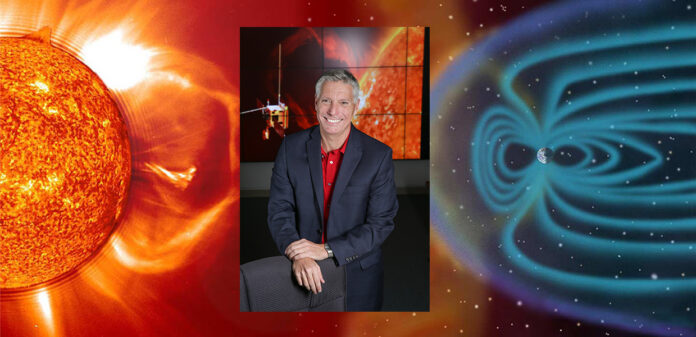HUNTSVILLE — Nine Alabama universities and one private firm are partnered in a $20 million, five-year effort led by the University of Alabama in Huntsville. The partnership is to develop transformative technologies in plasma science and engineering funded by the National Science Foundation Established Program to Stimulate Competitive Research (EPSCoR).
The goals of the “Future Technologies enabled by Plasma Processes” initiative are to develop technologies using plasma – the most abundant form of matter in the observable universe – in hard and soft biomaterials, food safety and sterilization, and space weather prediction.
The alliance led will build Alabama’s capacity in PSE research and the supporting workforce and make the state a world-renowned hub for PSE.
“The funding is the result of a team effort from the co-investigators in assembling the group, who generated the concepts and ideas underlying the proposal and executed the plan by writing a successful proposal,” said Dr. Gary Zank, director of UAH’s Center for Space Plasma and Aeronomic Research and the Aerojet Rocketdyne chair of the Department of Space Science. “The Alabama EPSCoR committee that oversees all the Alabama EPSCoR activities –especially Prof. Chris Lawson and his team of Alabama university vice presidents of research – was instrumental in guiding and helping us develop the proposal.
“I would be remiss in not recognizing our Alabama members of the United States Senate, Sen. Richard Shelby and Sen. Tommy Tuberville, as well as former Sen. Doug Jones, in contributing to the building of an Alabama research and technological environment that values high tech.”.
Shelby said the funding from NSF is exceptional news for UAH and the entire state.
“This grant will allow for ground-breaking plasma research to occur, accelerating new technologies for a variety of applications, and will further solidify Alabama as a leader in this field,” he said. “I look forward to seeing the impact that this five-year initiative will have on the future utility of plasma science and engineering.”
Tuberville called the grant welcome news and said it is well-deserved for this innovative collaboration.
“Our state is home to many talented researchers and developers, and this funding will go a long way in making Alabama a leading pioneer in PSE research and stimulating meaningful advancements in plasma technologies,” he said.
The award is an indication of the evolution of space science at UAH, according to interim UAH President Dr. Chuck Karr.
“Congratulations to Dr. Gary Zank, Alabama’s only full-time member of the National Academy of Sciences, who is the founder of the Department of Space Science at UAH and whose global recognition and tireless efforts have brought together a top-notch team at CSPAR that is known worldwide for its research,” Karr said. “Achieving this grant is a reflection of the incredible strides that the Department of Space Science and CSPAR have made in building a program that is now ranked 13th in the nation in research expenditures in the area of space physics and astrophysics, according to the NSF Higher Education Research and Development survey.
“This NSF grant reflects the outstanding scientists, researchers, post-doctoral investigators and students that space science and CSPAR have and that UAH has.”
Although different in aims, research goals and scope from a previous $20 million NSF EPSCoR grant awarded in 2017, the new grant will build plasma expertise, research and industrial capacity, as well as a highly trained and capable plasma science and engineering workforce, across Alabama.
“In this regard, the grant is very closely aligned with the Alabama EPSCoR State Science & Technology Roadmap and the state’s economic development plan, Accelerate Alabama,” Zank said.
Both plans prioritize advanced manufacturing, agricultural and food products, biosciences and biotechnology, chemical and petrochemical, energy, forestry products, information technology and cybersecurity, metal and advanced materials, nanotechnology, plasma science and transportation.
Partnered with UAH are the University of Alabama, the University of Alabama at Birmingham, Auburn University, Tuskegee University, the University of South Alabama, Alabama A&M University, Alabama State University, and Oakwood University, together with commercial/industrial partner CFD Research Corp., which specializes in computational fluid dynamics software. It is headquartered in Cummings Research Park.
In addition, FTPP cooperatively partners with the Los Alamos National Lab, Sandia National Lab and Princeton Plasma Physics Lab. FTPP will harness and share the team’s expertise, resources and workforce.
“It’s incredibly exciting to be leading and working with the 10-member university and industry consortium that makes up FTPP,” Zank said. “Intellectually, academically and technologically, the new grant represents plasma research and engineering at its most ambitious.”
Don’t miss out! Subscribe to our email newsletter to have all our smart stories delivered to your inbox.



